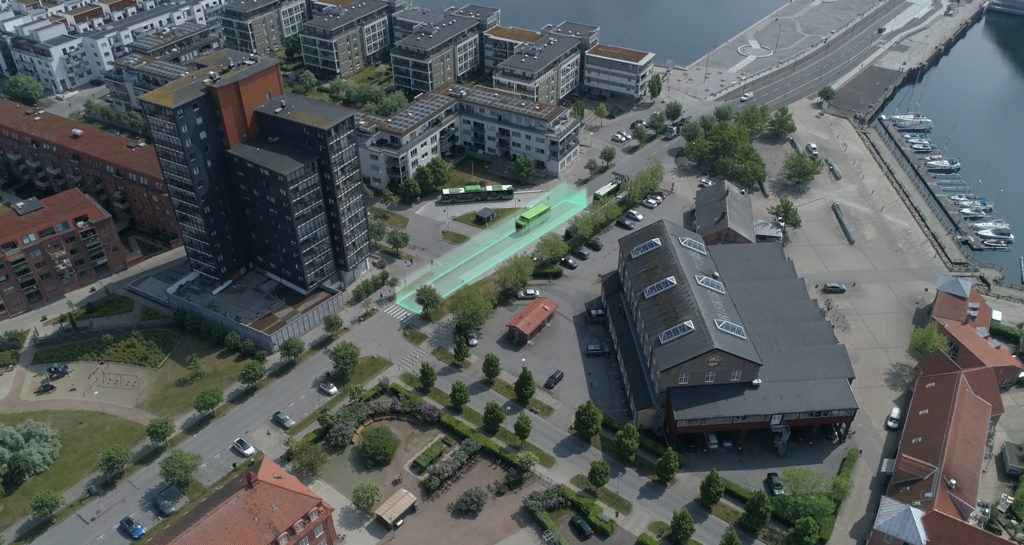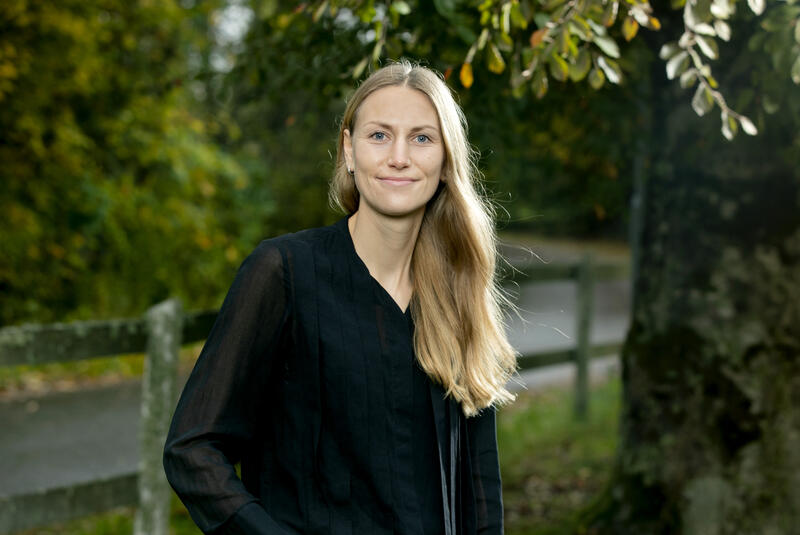How do we use the city spaces in the best way?
In the autumn of 2023, the last tests will start within Smart Urban Traffic Zones, an initiative, led by CLOSER and partly financed by Vinnova, a project that focus on how we can use digital solutions as a tool in the urban environment. The purpose is to further develop the solutions that were tested in an earlier part of the project, all so that cities, carriers and transport buyers can use this as part of their future daily work.

Foto: Lindholmen Science Park
Smart urban traffic zones are testing smart solutions in Gothenburg and Stockholm that will contribute to increased flexibility in the use of the city's spaces, more efficient transport and increased traffic safety. This by testing and evaluating digital solutions that are built using tools such as geofencing, sensors and digital signage. The goal is to create the conditions for the implementation of smart zones.
We are very proud that we have brought together 25 different organizations from both industry such as vehicle manufacturers, technology suppliers and logistics players, academia and the public sector to jointly test a more digitized and smart use of the space in the city
Felicia Hökars, project leader, CLOSER
Smart urban traffic zones focus on three different parts that will test and develop different concepts of smart zones, a work that was started earlier within the same project.
How can we get more efficient loading areas in the city?
In central Gothenburg the concept for efficient loading areas is to be tested. Several transport companies will share information about how they use different loading areas, some loading areas will also be equipped with sensors that will monitor the usage. About 35 delivery vehicles will participate in the test, which operate daily in this area.
There will also be a similar test, but on a smaller scale, in Stockholm.
– Better use of loading bay areas, reduced driving and queuing in the city lead to less emissions and an improved working situation for drivers. Through shared data and a common situational awareness, we believe that the city's spaces can be used more dynamically, that transport companies can plan their operations better and that we can gain a good understanding of their needs, says Kristina Bäck Jensen, Göteborgs stad.
How is it possible to have safer and more secure shared areas in the city centre?
The second test carried out within the initiative concerns safe and secure shared urban areas and how we can use the city's streets in a dynamic way. This part will test how, with the help of smart solutions, we can create a safe and secure traffic environment in areas of the city that change their purpose depending on time and needs. A good example is completely ordinary streets that are converted into pedestrian streets during the summer. The goal of this test is to raise awareness, and change the behavior of cyclists, pedestrians and drivers in these shared areas, we do this by offering new solutions such as digital signage and dynamic speed control to thereby increase traffic safety and security in these places.
– As cities grow, competition for city space increases and we have to find solutions where the street's function and appearance can change over the course of the day in a completely different way than today. What we are testing in Stockholm's inner city explores the possibilities for this, while at the same time we find new opportunities for increased traffic safety, and communication between different types of traffic modes. Within Smart Urban Traffic Zones, we have created a unique opportunity, with broad knowledge from various actors, to test and implement long-term sustainable solutions. Through open dialogue and discussion about the conditions and needs of various actors, we create solutions that have a broad foundation early on and that are in line with the cities' ambitions regarding the development of the street, says Victoria Herslöf, Stockholm stad.
How do we get efficient and at the same time safe construction transport in the city?
Construction transport accounts for a large proportion of the transport that runs within a city, and in this part of Smart Urban Traffic Zones, solutions are developed that both contribute to increased safety and more efficient construction transport. A smart system for safer exits of construction vehicles is will be developed further and tested once again at a construction site exit, this time in Stockholm. There is also a need for these types of systems in places where many construction vehicles move, for example the concrete factories that are close to the city center and in some cases completely integrated into the city, such as the concrete factory in Hammarby sjöstad, which participates in the tests. We will also test how to further develop an intelligent permit process of transports by developing how the city can communicate the requirements and terms stated in the permit to drivers and vehicles, such as approved routes, times and speeds.
Both the tests in Gothenburg and Stockholm start in the fall of 2023 and continue until the fall of 2024. All the tested solutions will be evaluated both regarding the technical performance but also regarding its potential when fully implemented. In parallel with this, we will investigate issues linked to the standardization of messages between vehicles and their fleet management systems as well as infrastructure and city, and make sure it is in line with what is done within the EU. An accessible guide for municipalities regarding how they can implement these solutions in their city will also be produced.
Project partners
Dagab, Edeva, GLC, Göteborgs stad, Göteborgs universitet, HAVI, Heidelberg Materials, KTH, Martin&Servera, Menigo, MLogistics, Postnord, Ramudden, RISE, Scania, Schenker, Stockholms stad, Technolution, TGM, Trafikverket, Trivector, Viscando, Volvo Lastvagnar och VTI.
Do you want to know more?

